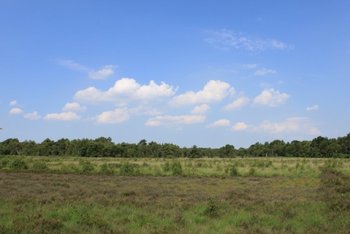More peat carbon in warm climates
It is well known that peatlands play an important role in the Earth’s carbon cycle, storing more than 500 Pg of carbon (1 Pg = 1 Gt = 1015 gram) at present, comparable with the total anthropogenic fossil-fuel emissions since preindustrial times. Most of this carbon was accumulated since the last glacial maximum (LGM). However, the location and extent of peatlands before the LGM, as well as the longer-term history of peatland development, is substantially less well known, a gap partly closed by the present study.
Dr Claire Treat: ”Our study has proven the continuous presence of peatlands in high northern latitudes since the last interglacial some 125000 years ago, and evidence for tropical peatlands stretches back for the last 50000 years.” The nature of the evidence collected – published descriptions of organic deposits buried under sediment – only allows qualitative conclusions. Kleinen and Brovkin therefore performed a model experiment with a peat-enabled climate-carbon-cycle model and were able to quantify global peatland extent and carbon storage throughout the last glacial cycle, from 116000 years before now to preindustrial times.
This modelling study also broke new ground as modelling the extent and carbon storage of tropical peatlands had not been demonstrated before. The model shows that tropical peatlands also existed throughout the last glacial, with extent and carbon storage similar to the present and much less variable than in boreal latitudes. Dr Thomas Kleinen: “The total area of tropical peatlands stays almost constant, despite the large climate variations between warm and cold phases.” While northern peatlands in the model have carbon stocks between 80 PgC at the LGM and 410 PgC at present, tropical peatland carbon stocks remain nearly constant at about 145 PgC.
The authors could also show the link between peatland carbon storage and climate: Generally, the peatland carbon storage is related to temperature, with cold conditions leading to much smaller carbon stocks than warm conditions, partly through the ice sheet extent, but partly also through the effects of temperature on growth. Prof Victor Brovkin: ”Our study implies that there is more peat in warmer climates. Although additional forcings are relevant in the Anthropocene, it seems that peatlands have a potential to accumulate some of the CO2 emitted from fossil fuel use, enhancing the capacity of the land sink.”
Original publication
Treat, C., T. Kleinen, et al. (2019) Widespread global peatland establishment and persistence over the last 130000 years. PNAS. doi: 10.1073/pnas.1813305116
Contact:
Dr Thomas Kleinen
Max-Planck-Institut für Meteorologie
Tel.: 040 41173 140
E-Mail: thomas.kleinen@mpimet.mpg.de
Prof. Dr. Victor Brovkin
Max-Planck-Institut für Meteorologie
Tel.: 040 41173 339
E-Mail: victor.brovkin@mpimet.mpg.de


